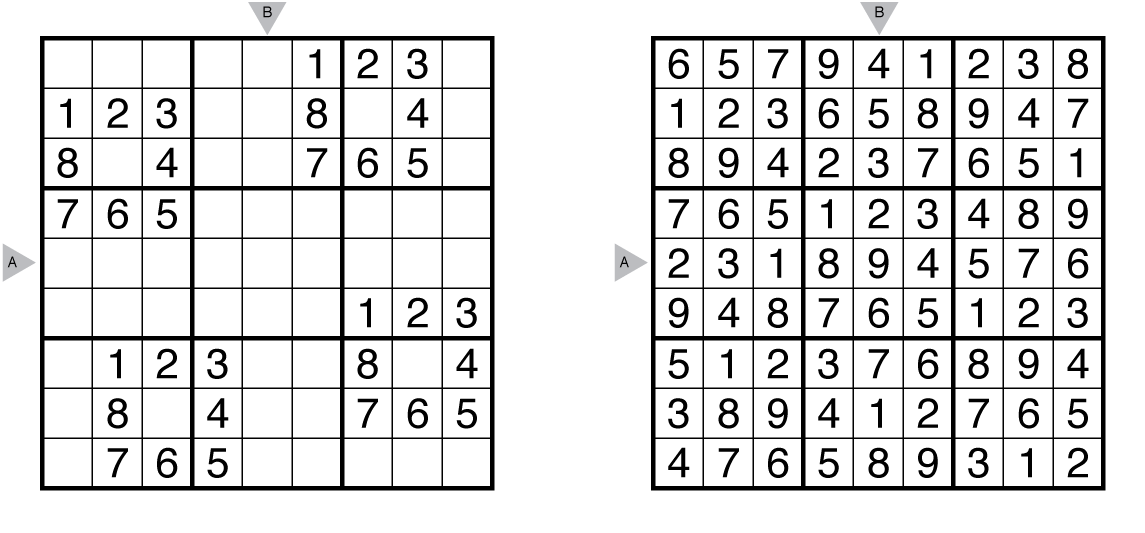Sudoku Rules and Info

Rules: Insert a number from 1 to 9 into each cell so that no number repeats in any row, column, or bold region.
Answer String: Enter the row/column marked “A”, followed by a comma, followed by the row/column marked “B”. Rows are entered from left to right and columns from top to bottom. This example has the key “231894576,453296718”.
(Brief) History of Sudoku: Descended from other Latin Square puzzle types. The region constraint essential to this style was first introduced by Howard Garns in 1979. His puzzles, called “Number Place”, were first published in the US and later taken back to Japan as “Nanpure” by several puzzle designers. In Japan, the puzzle evolved in numerous ways, including the introduction of symmetry, increased difficulty, and fewer clues. “Nanpure” was renamed “Sudoku” by Nikoli, a Japanese publisher whose puzzles inspired the reintroduction of this style to the west by Wayne Gould through The Times (of London).
History of this example: This puzzle is very similar to the first classic sudoku written by Thomas Snyder, which appeared in his “The Art of Sudoku” post after winning his first world championship in Prague in 2007. This specific puzzle is used on the front cover of his book: The Art of Sudoku.
Sources for Sudoku Puzzles: Follow this link for classic Sudoku puzzles on this website and this link for variations on Sudoku besides the ones in separate sub-categories already. If you are new to this puzzle type, here are our easiest Sudoku Puzzles to get started on. More classic Sudoku puzzles can be found in The Art of Sudoku, The Art of Sudoku 2 and in our beginner-friendly collection Intro to GMPuzzles by Serkan Yürekli.
Design rules for contributors: A Grandmaster Sudoku will have a unique solution that can be reached by logic alone. Generally, a Grandmaster Sudoku must have 32 or fewer givens and must have some aspects of symmetry or a theme that is interesting enough to not require symmetry.
